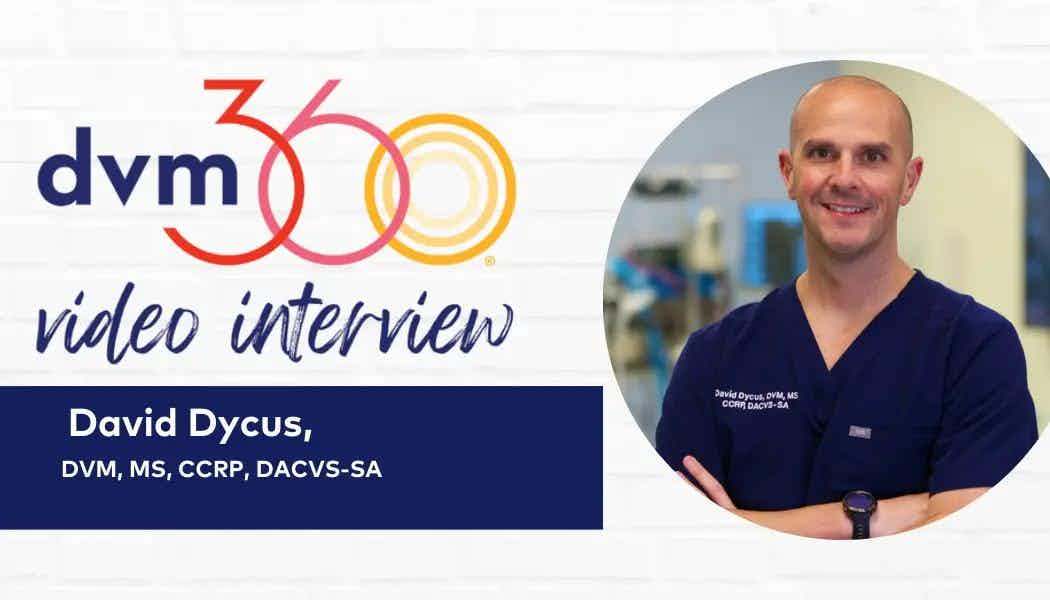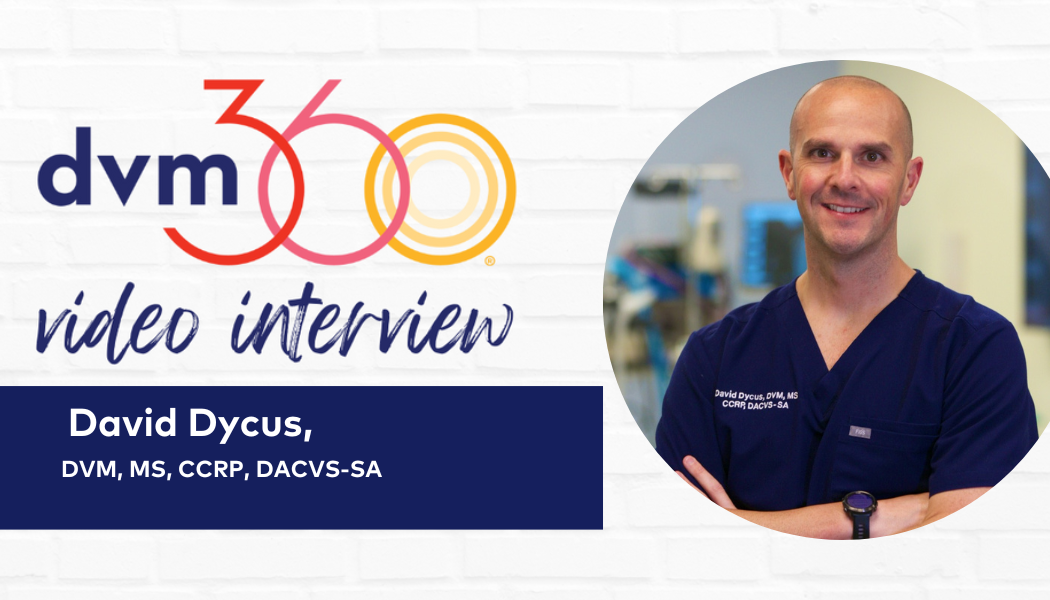Proper exercise for the athletic dog (Proceedings)
It is best to have a good basic knowledge of exercise physiology when designing and implementing a rehabilitation and/or conditioning program.
Exercise physiology
It is best to have a good basic knowledge of exercise physiology when designing and implementing a rehabilitation and/or conditioning program. Exercise physiology is a discipline that looks at how exercise affects the body. This same science has application in the field of physical therapy.
At any given time the body performs at a given metabolic level. The systems of the body as a whole are conditioned to maintain homeostasis at this level. If the demands placed upon the body increase over time, the body adapts and conditions itself to maintain homeostasis at this new level. An understanding of the physiological changes involved in this process helps us to develop programs that allow us to regulate the conditioning or reconditioning of the body. They can be used to condition the body as a whole or to focus on various body segments. In physical therapy, rehabilitative programs can be developed to treat injuries, to stimulate healing of the injuries, and enhance reconditioning of the injured segment. Due to the abnormal biomechanical forces acting upon the body during the reparative phases of healing, certain segments become stronger than other segments. Exercise programs should then be implemented to remedy any conditioning imbalances of the body as a whole.
Muscle is the tissue most affected by exercise activities or disuse associated with injury. Understanding muscle function and the molecular events of muscle contraction provides a basis for the concepts of physical therapy and exercise physiology. There are three types of muscle in the body: skeletal, smooth, and cardiac. This chapter will focus on skeletal muscle. Skeletal muscles in general connect one bone to another bone. Each muscle, itself, is made up of thousands of individual muscle cells. A muscle fiber, or muscle cell, is long, round, and surrounded by a membrane called the sarcolemma. Inside these cells are myofibrils, which are made up of filaments composed of protein. These contractile proteins are arranged in units called sarcomeres.
Actin and myosin are the two types of protein chains in the sarcomere. They interact as a result of enzymatic and chemical reactions to produce muscle cell contraction. Enzymes are protein molecules that specifically interact with the actin and myosin substrates to allow the chemical reactions to occur. Calcium and phosphate are the chemical components of contraction. Phosphate is in the form of adenosine triphosphate (ATP). ATP is located at the end of the myosin leverage arm. A calcium ion opens a receptor site on the actin protein chain. Energy is created when ATP releases a phosphate (P) ion producing adenosine diphosphate (ADP). The resultant energy allows the ADP to create a bond between the open actin receptor site and the myosin leverage arm. This bond changes the myosin structure providing a leverage action to produce a muscle contraction between the two fibers. The ADP is released and the lever arm is freed to reattach. Energy is then required to add a P to the ADP recreating ATP which is then used for further contractions.
Muscle structure and function
The accumulated contractions of the muscle fibers create contraction of the muscle tissue. Muscle contraction is controlled by its innervation. One nerve diverges to innervate many muscle fibers. The resultant combination of this nerve and the fibers it innervates is called a Motor Unit. Muscle contraction as a whole is a result of an accumulation of motor units. The muscle fibers are grouped together and organized with other fibers by a sheath of connective tissue which is named according to its level of organization. Endomysium covers each of the muscle fibers themselves, and perimysium separates discrete bundles of fibers. Epimysium is the connective tissue layer that surrounds the grouped bundles. The fascia is the sheath that covers the epimysium and serves to protect each muscle from movement over hard structures or movement from adjacent muscles. The arrangement of these fibers plays a role in the function of each muscle. It is a combination of motor unit group and fiber arrangement that dictates the resultant type of muscular contraction.
In general, muscle contraction and work is transferred through the tendon. Tendons are dense, parallel-fibered connective tissue made of collagen. The musculotendinous junction is a layered transition between muscle fibers and the collagen of the tendons. Frequently there is tendons of origin and insertion running throughout the length of the length of the structure. Musculotendinous structure is closely tied to functional requirements. Structural shapes of muscle are fusiform and pennate. Pennate muscles are divided into unipennate, bipennate, and multipennate. Pennate structures allow a muscle to lift great loads but through a small range of motion as in the vertebae. Fusiform structures have the ability to lift a small load at a great velocity through a large rang of motion i.e. antebrachium. These two types can work together if both strength and speed of movement are needed at a particular joint, such as the shoulder or hip joint.
Muscle energy systems
The body needs energy to maintain homeostasis, and additional energy during physical activity. The body utilizes three systems to provide this energy: 1) Immediate Energy Sources, 2) Glycolytic Energy Sources, 3) Oxidative Energy System. The type of activity the muscle is performing defines which of the systems will be used. In addition, to allow for the action to take place, the cellular environment must be conducive for the this process. These environmental factors are pH, hydration status, temperature, and presence of the proper enzymes. While the metabolism of energy production is occurring, waste products are produced. These waste products must be removed from the site or they will build up and alter the environment of activity.
The immediate energy source is from the one enzyme system. This system uses intracellular ATP, creatine phosphate (CP), and the ADP/myokinase reaction to provide energy for increased body activity. A limited amount of ATP is stored at the myosin crossbridges, near mitochondria, and beneath sarcolemma. ATP breakdown is a hydrolytic reaction and is very highly regulated by the body. The body does not allow big ATP changes. Creatine phosphate is a high energy compound that is used to make sure that the ATP concentration does not get too low. It is located near the actin-myosin filaments and in the mitochondrial membrane. Myokinase is the enzyme that allows two ADP molecules to combine to form ATP and adenosin monophosphate (AMP). This reaction does not provide much energy to the system, but AMP serves as one of the allosteric modulators to stimulate carbohydrate (glucose) breakdown which is used in the next energy system. Energy from this system lasts anywhere from five seconds up to ten seconds and sometimes up to fifteen or twenty seconds in certain elite athletes.
The glycolytic pathway provides energy from five to twenty seconds up to two minutes. Energy comes from the anaerobic breakdown of glucose. This is a more complicated form of energy production using enzymes and multiple reactions. In the first phase of glycolysis a glucose molecule enters the cell where the enzyme hexokinase adds a phosphate to phoshporylate the glucose molecule, which creates glucos-6-phosphate (G6P). G6P then goes through a series of reactions to produce fructose-1,6-bisphosphate. One of the reactions involves the enzyme phoshofructokinase which adds another phosphate to the molecule. As a result, two ATP molecules are used in phase one. In the first reaction of the second phase of the glycolytic pathway, fructose-1,6-bisphosphate is converted into two three carbon molecules. Glyceraldehyde-3-phosphate is then phosphorylated and oxidized which releases two hydrogen molecules and two electrons. The two electrons and one hydrogen molecule combine with nicotinamide adenine dinucleotide (NAD-) to form NADH which can be used in the oxidative energy system. The four remaining reactions of phase two result in a production two ATPs which combined with two ATPs from the other three carbon chain result in a total of four ATPs produced in phase two. The end result of the glycolytic pathway is pyruvate and the production of two ATPs that can be used as energy.
If the pyruvate is not able to enter the oxidative energy system it combines with NADH via the enzyme lactodehydrogenase (LDH) to produce lactic acid. When released into physiologic pH, lactic acid releases a proton and becomes lactate. Without a buffer, lactate production results in a decrease in cellular pH. Lactate production in itself is not necessarily detrimental to muscle metabolism. After bouts of intense exercise, lactate can be oxidised back to pyruvate which can be converted to glucose in the liver, or converted to pyruvate in muscle and other tissue for ATP production. Lactate concentrations do coincide with the release of a proton and potential decreases in pH. It is this decrease in cellular and blood pH that has detrimental affects on energy metabolism and enzyme activity. Therefore lactate itself is not a problem, it is the accompanying acidosis.
The third energy source is from oxidative metabolism. It starts approximately two minutes after the start of the physical exercise. It is the most complicated energy system, and it utilizes glycolysis, the citric acid cycle, and the electron transport chain. Each of these are complex multiple reaction cascades that result in the production of energy or ATP. It can use carbohydrates, lipids, and proteins as energy sources and is the most efficient system. This is the system that is most utilized in long term activity. Pyruvate is converted into acetyl-CoA by a series of enzymes called pyruvate dehydrogenase which produces carbon dioxide and NADH. Free fatty acids are converted to acetyl-CoA by the process called β-oxidation. The resultant acetyl-CoA then enters the Citric Acid Cycle. The products of this cycle are carbon dioxide, ATP, NADH, and FADH.
The biological use of oxygen occurs in the electron transport chain (ETC). The electrons acquired in NADH and FADH are added to hydrogen atoms and oxygen atoms to form water, and energy to create ATP from ADP. The last electron receiver in the chain is oxygen. This process is termed oxidative phosphorylation. Three ATP's are produced from each NADH and two for each FADH. If oxygen is not present to receive the electrons that flow down the chain, the chain is shut off. The result is a backup of the components of the ETC and the systems that produce them.










